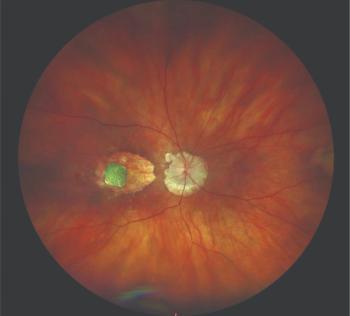
Two-wavelength autofluorescence for macular xanthophyll carotenoids with Christine Curcio, PhD
Advanced autofluorescence reveals cellular pigment reservoirs with therapeutic potential at the Heidelberg 2025 International SPECTRALIS Symposium – And Beyond (ISS).
Christine A. Curcio, PhD, highlighted new findings on macular pigment imaging and its implications for age-related macular degeneration (AMD) at the Heidelberg 2025 International Spectralis Symposium – and Beyond (ISS), held June 13-14 in Heidelberg, Germany. Her talk centered on 2 recent studies from her group, shedding light on both imaging advances and the developmental underpinnings of AMD.
In the first study, Curcio’s team explored the long-standing question of pigment appearance in AMD using pixel-wise statistics and Z-score mapping in autofluorescence imaging. “We found the appearance of two-wavelength autofluorescence and blue autofluorescence in the same eyes in normal and AMD groups differ distinctly,” she said. Notably, while blue autofluorescence declined progressively from normal to intermediate AMD, two-wavelength autofluorescence revealed unique undulating signal patterns, particularly in AMD eyes. This suggests that “two-wavelength autofluorescence and blue autofluorescence are independent,” and both are valuable for assessing metabolic status in the high-risk macula lutea.
The second study addressed spatial alignment between macular pigment peaks and structural foveal centers, offering insights into how foveal shape—shaped by developmental forces—may influence AMD susceptibility later in life. “We also developed methods to automatically designate the center of the macular pigment distribution relative to a structural foveal center seen on OCT,” she added.
Curcio underscored the relevance of two-wavelength autofluorescence by linking it to oral supplement efficacy from AREDS2, the cellular localization of macular pigments in Müller glia and photoreceptors, and HDL genetic pathways influencing pigment bioavailability. She added, “Macula xanthophyll carotenoids are so wonderful for vision and retinal health that we humans and other nonhuman primates evolved to have them.”
She proposed that enriched xanthophyll delivery might reduce drusen formation and that their interacting proteins represent “druggable targets for preserving the fovea in all outer retinal disease.” The work opens avenues for precision prevention strategies, using advanced imaging to tailor interventions.
Newsletter
Don’t miss out—get Ophthalmology Times updates on the latest clinical advancements and expert interviews, straight to your inbox.





